Where Is That in the Bible?
Where Is That in the Bible?
Patrick Madrid
Our Sunday Visitor Publishing Division
Our Sunday Visitor, Inc.
Huntington, Indiana 46750
Portions of this book are adapted with permission from Any Friend of Gods Is a Friend of Mine, copyright 1996 by Basilica Press, San Diego, Calif. All rights reserved. Scripture texts in this work are taken from the Catholic edition of the Revised Standard Version of the Holy Bible, copyright 1965, 1966 by the Division of Christian Education of the National Council of the Churches of Christ in the United States of America. Used by permission. All rights reserved. Excerpts from the Catechism of the Catholic Church, copyright 1994, 1997, United States Catholic Conference, Inc. Libreria Editrice Vaticana. Used by permission. All rights reserved. The publisher and author are grateful to those copyright holders whose materials have been used in this book. Every reasonable effort has been made to determine copyright holders. If any copyrighted materials have been inadvertently used in this work without proper credit being given in one form or another, please notify Our Sunday Visitor in writing so that future printings of this work may be corrected accordingly.
Copyright 2001 by Our Sunday Visitor Publishing Division, Our Sunday Visitor, Inc.
All rights reserved. With the exception of short excerpts for critical reviews, no part of this book may be reproduced in any manner whatsoever without permission in writing from the publisher. Write:
Our Sunday Visitor Publishing Division
Our Sunday Visitor, Inc.
200 Noll Plaza
Huntington, IN 46750
ISBN: 978-0-87973-693-4
LCCCN: 00-140015
Cover design by Tyler Ottinger
Interior design by Sherri L. Hoffman
PRINTED IN THE UNITED STATES OF AMERICA
To Nancy,
I love you
CONTENTS
INTRODUCTION
I have a vivid memory of sitting in an all-night restaurant late one night several years ago. At the table, across from me, were two Evangelical Protestants, Mike and Steve, Ill call them. Steve was an ex-Catholic. Over cups of lousy coffee and a plate of fries, we had our Bibles out and were going back and forth, strenuously but good-naturedly discussing our beliefs about salvation. As Protestants, they objected to the Catholic Churchs teaching that we are not saved by faith alone.
For by grace you have been saved through faith, Steve quoted vigorously to me from Ephesians 2:8-9, his index finger stabbing the page for emphasis. And this is not your own doing, it is the gift of God. It is not because of works, lest any man should boast!
He sat back and smiled, sure that he had trumped me with this silver bullet verse. (Steve had just a moment earlier insisted that as a Catholic he had believed he had to earn his salvation.)
I smiled back at them. Amen, brother! I said. Preach that! Then I sat back and waited for the reaction I knew would come.
Mike frowned slightly. Youre just making fun. Were trying to show you what Gods Word teaches about salvation.
Im not making fun, Mike, I said in all sincerity. I believe that passage with all my heart. But I also understand its meaning in a way thats different from the way you understand it. Look at us. Weve spent the last hour and a half reading to each other from the same Bible we both know what Scripture says, but how can you be so sure that you know what it means? How can you be so sure that your particular interpretation of Scripture is accurate?
This question hung silently in the air between us for a moment. Steve said, Scripture is clear. We dont have to worry that we dont understand it. Its meaning is clear.
Is it? Are you certain you have the right interpretation? I asked, eyebrows arched. They nodded vigorously. So I used this exercise to show them why I as a Catholic look not just to Scripture alone, as they did, but also to the Church and its living Tradition of interpreting Scripture.
Lets say someone wrote these words a hundred years ago:
I never said you stole money.
As Steve and Mike did, anyone you asked would say he understands the meaning of that sentence. Six short words, nothing complicated. But do you understand the meaning for sure?
Perhaps the person who wrote it meant to say: I never said you stole money. Implying that someone else said it.
Or maybe he meant:I never said you stole money. He thought it, he suspected it, but he never said it.
Or, I never said you stole money. He said your neighbor did.
Or, I never said you stole money. He meant that you lost the money, or you squandered it, or did something else with it he didnt approve of but you didnt steal it.
Or, I never said you stole money. Maybe you stole his pig or his hat, not his money.
As I went through this exercise with Mike and Steve, and they saw how easily one could derive several legitimate but very different meanings from this short, six-word sentence, I could see on their faces that they understood my meaning. I picked up my Bible and asked them, Which would you say is more likely to be open to misinterpretations, this six-word sentence, or the Bible?
The answer was obvious. They saw what I meant about how we cant just assume we have the correct understanding of Scripture. That moment was a big breakthrough for them. It helped them move past the where does it say that in the Bible? form of arguing against Catholicism to a more thoughtful stance that allowed them to see that Catholics are able to draw implications from the biblical text that they had never considered before. (Thanks be to God, both of these men became Catholic some time later. I dont attribute their conversions to anything other than Gods grace and mercy, but they both told me later that our I never said you stole money discussion that night was very helpful in drawing them home to the Catholic Church.)
The goal of this book is to help you dialogue effectively with those many sincere and good people who want to serve God and who want to obey what he has taught us in Scripture. Drawing on my experiences in apologetics and evangelization, this book was written to provide you with the basic Bible verses you will need to help others see that their understanding of Scripture, as sincere as it may be, might just possibly not be the right one. You can show them things in the Bible that many have never had pointed out to them before. And most of all, if you use this book to help you dig deeper into the Bible in your own personal study and prayer time, you will be evangelizing yourself, allowing the life-giving truth and power of Scripture to flourish in your own heart. Its really only then, that you can radiate that truth to those around you.
HOW TO USE THIS BOOK
The purpose of this little book is to provide a basic overview of the various Bible passages that are helpful to a discussion of the Faith with non-Catholics. Its arranged in an order to be most effective in explaining Catholic doctrines and practices, but sometimes passages are intentionally introduced out of the sequence in which they appear within the canon of Scripture.
Some of the Old Testament Deuterocanonical books (i.e. Tobit, Judith, Sirach, Baruch, 1 & 2 Maccabees, the Wisdom of Solomon, and parts of Esther and Daniel) are cited occasionally in this work, but because many non-Catholics do not regard these books as inspired and canonical, we concentrate mainly on the biblical evidence found in the version of the biblical canon that most non-Catholics accept (i.e., the 66 books of Old and New Testaments, common to Catholics and Protestants).
This book is not by any means an exhaustive or comprehensive presentation of the biblical evidences for Catholic teaching. There are certainly more Scripture passages that could have been adduced for many of these subjects. Rather, its designed to be a handy reference guide, an overview of the major biblical passages that pertain to many issues that tend to come up between Catholics and non-Catholics. Not all the possible topics of discussion are contained here, nor are the ones that are contained here presented with every possible Scripture verse possible. Space considerations dictate that only the most central verses be included.
Next page
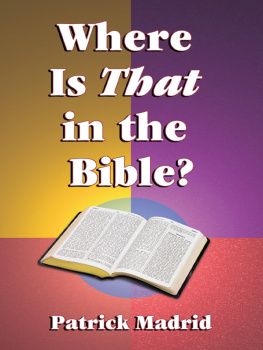
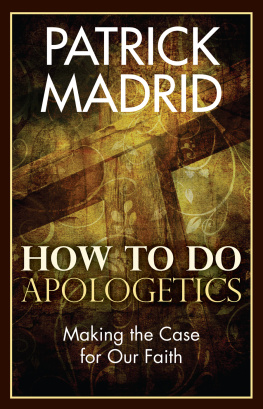
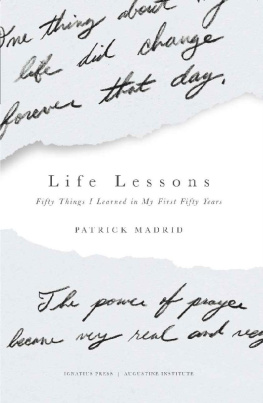

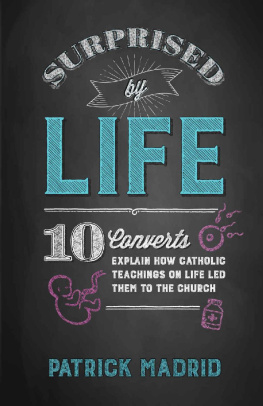



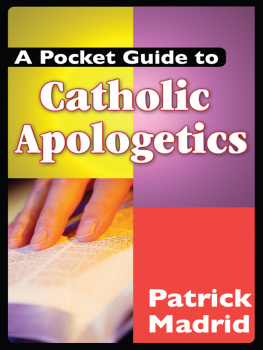
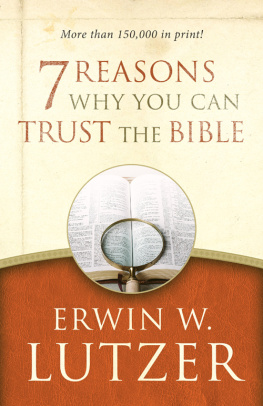

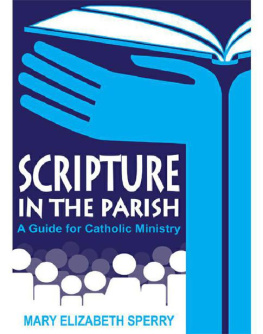
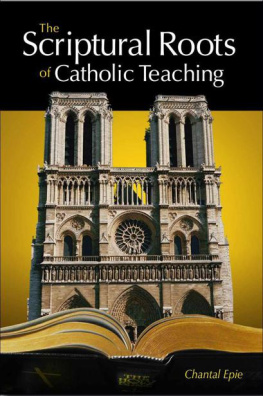
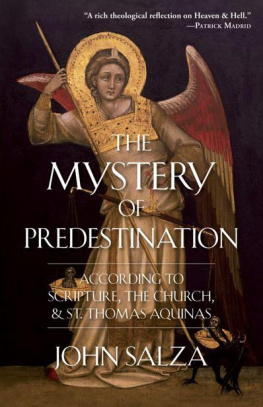
![Scott Hahn [Inconnu(e)] - A Pocket Guide to the Bible](/uploads/posts/book/134750/thumbs/scott-hahn-inconnu-e-a-pocket-guide-to-the.jpg)